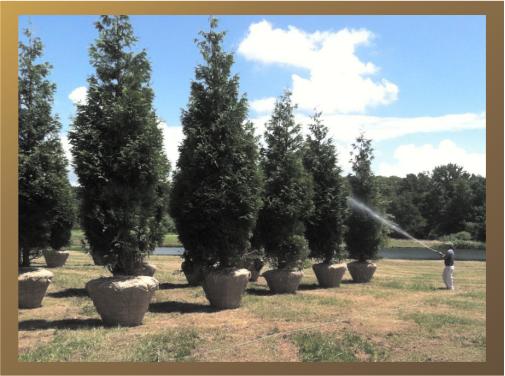
Ty Wongus, Founder and President of Port Life T Shirts, with one of the shirts she created for cancer patients like herself
Ty Wongus’ dedicated spirit is well known to her family and friends. Currently confronting her second cancer diagnosis, the Cambridge resident has been battling stage 4 metastatic cervical cancer over the past two years. Now, as founder of Port Life T-Shirts, many others travelling the same arduous path are finding fellowship and inspiration, along with uplifting apparel choices. “Even more than a business, it’s a movement,” Wongus noted.
In 2020, during a regular blood work session taking place in a public access area, Wongus was disturbed at having to remove most of her shirt, leaving her body exposed, compromising her privacy and dignity in a way which added incrementally to the already enormous emotional distress.
She recalls going home that day determined to locate a shirt which would open only to allow her inserted port to receive the needed treatment. But when her proactive online search returned no results, Wongus knew that the answer was to create one herself. With no direct sewing or design experience, she nevertheless forged forward experimenting on her own, taking two shirts apart and attempting to reattach them in workable fashion, which was a struggle. “I broke two sewing machines,” she recalled.
After a while, a late-night epiphany involving the use of heat transfer vinyl greatly reduced the amount of time-consuming sewing needed, helping to get shirts to people faster. “By the time someone orders a shirt, I’m trying to have it at your door within a few days, which is very important,” she added. Though the original design was revised, Wongus intends to always hold onto that first shirt, which she calls “her baby.”
When she showed up for treatment wearing her new creation, nurses were wowed by the innovative style, urging her to create more for other cancer patients. Wongus got right to work crafting additional shirts. But having been in the business world for a decade selling cars, she was also mindful not to be copying someone else’s design. Finding the field clear, she immediately began prepping and filing preliminary paperwork to patent her own design. Before long, Port Life T-Shirts was up and running, with a website and accompanying social media such as Facebook, Instagram, and now TikTok videos to let others know about the unique niche enterprise, which Wongus regards as a movement as much as a business. This month she was informed that her patent had been approved.
On her website thumbnails of fabric styles are displayed, with those ordering invited to “pick a pattern that speaks to your soul.” Some hold special appeal for children, such as one dotted with donuts, unicorns, and ice cream cones, to others featuring gaming consoles, Lego-type bricks, sharks, mermaid scales, and emojis.
A plethora of eye-pleasing and meaningful adult designs range from the Maryland flag, red roses, leopard, comic book, graffiti, bubbles, and equation, which she modeled in a photo and tagged with the comment “because I’m trying to figure this all out.”
There’s fabric for those wanting to display their Pride, as well as Old School and Digital Camo, Motherland celebrating Africa and another honoring legendary Bob Marley. Checkerboard, Lightning Storm, Alice in Wonderland, and Breast Cancer also figure in the thematic fashion mix.
In addition, Swag Shirts and Support Gear are available, including shirts, hats, and hoodies emblazoned with the phrases “No One Fights Alone” and “Stronger Than Cancer,” plus a chemo/travel tote bag bearing the inscription “Fight Like A Girl.” Proceeds from these support items go into a fund making it possible to assist cancer patients with the many hidden costs involved, even needing gas money to get to appointments.
For those with loved ones fighting cancer who they want to help without knowing how, Wongus’ cousin suggested providing Care Packages containing shirts and additional items offering enhanced ‘mind, body, soul care’ either with an identifying gift tag or anonymously.
Along with those Care Packages, there is a Cancer Services package providing the patient with membership into a private support group for talking about whatever they need to talk about, with others going through the same things. Wongus added. “When you have cancer, your mind becomes different,” she noted. “This is a space where people can safely share what they’re going through and be heard and understood. If you need to break down in the group, you can break down. It’s the connection that’s important.” Those providing these gifts can be assured that “we’ll take it from here, we’ve got this.”

Ty Wongus wears one of her Port Life T Shirts featuring ‘Equation’ design which resonates with her personal cancer journey, because, “I’m still trying to figure this out.”
A number of the Tik Tok videos she created bring visitors along on treatment visits, from the check in process to what she calls “taking my nap” in the hospital bed, as a way of demystifying the experience for others.
When first getting underway, Wongus was gratified by the response to crowdfunding efforts, which helped her begin making and distributing shirts to those in need. Now sales enable Port Life T Shirts to grow as a primarily self-sustaining operation, plus help give back to the overall Cambridge community, which she hopes to continue doing more of.
Despite her dire prognosis, Wongus is busy planning to celebrate her 40th birthday with an April 16th fundraising pajama party “jam” for all ages to be held at the Moose Lodge on Moose Lodge Road in Cambridge. A requested $20 donation from adults who can manage it will help Port Life T Shirts to proceed with future endeavors, but the event will be open to all, regardless. Those interested in learning more can message Wongus on the Port Life T Shirt Facebook page or search for it under FB events listings. Tickets can be purchased through Eventbrite, she mentioned.
Asked for her thoughts on celebrating a birthday in the midst of a second cancer diagnosis, Wongus admitted that it continues to be hard. But, it helps to realize that “out of that, we ended up creating this product, so we take the blessings where we can, just go with what we got.”
On top of coping with her own illness, last year Wongus lost “my best friend, my father, to Covid,” along with other family members. “It’s hard, but I have to keep going. The reality is, I’ve been dying since the day I was born. I was never promised tomorrow, regardless, let alone year 40 or 41. So I just keep going.”
For more information on Port Life T-Shirts, visit the website here.
Debra Messick is a retired Dorchester County Public Library associate and lifelong freelance writer. A transplanted native Philadelphian, she has enjoyed residing in Cambridge MD since 1995.







































